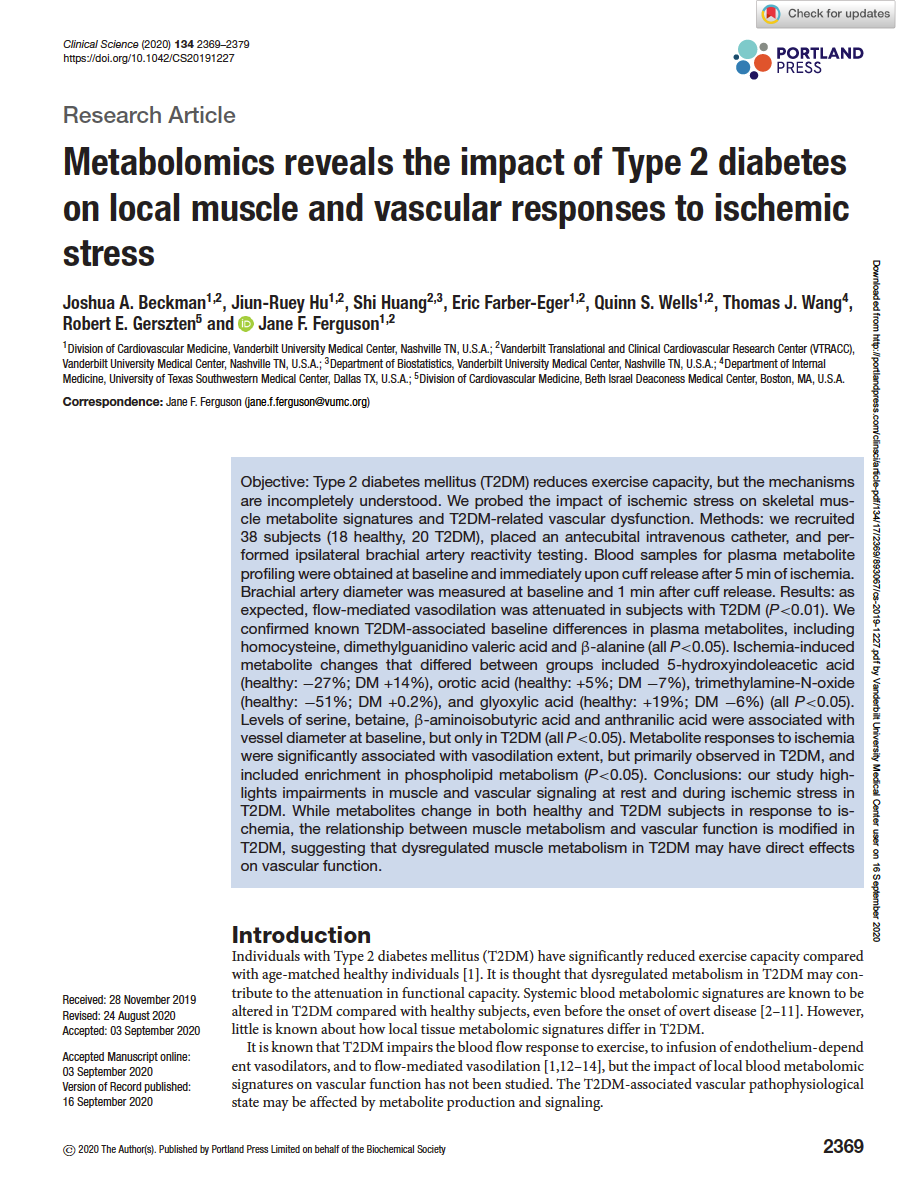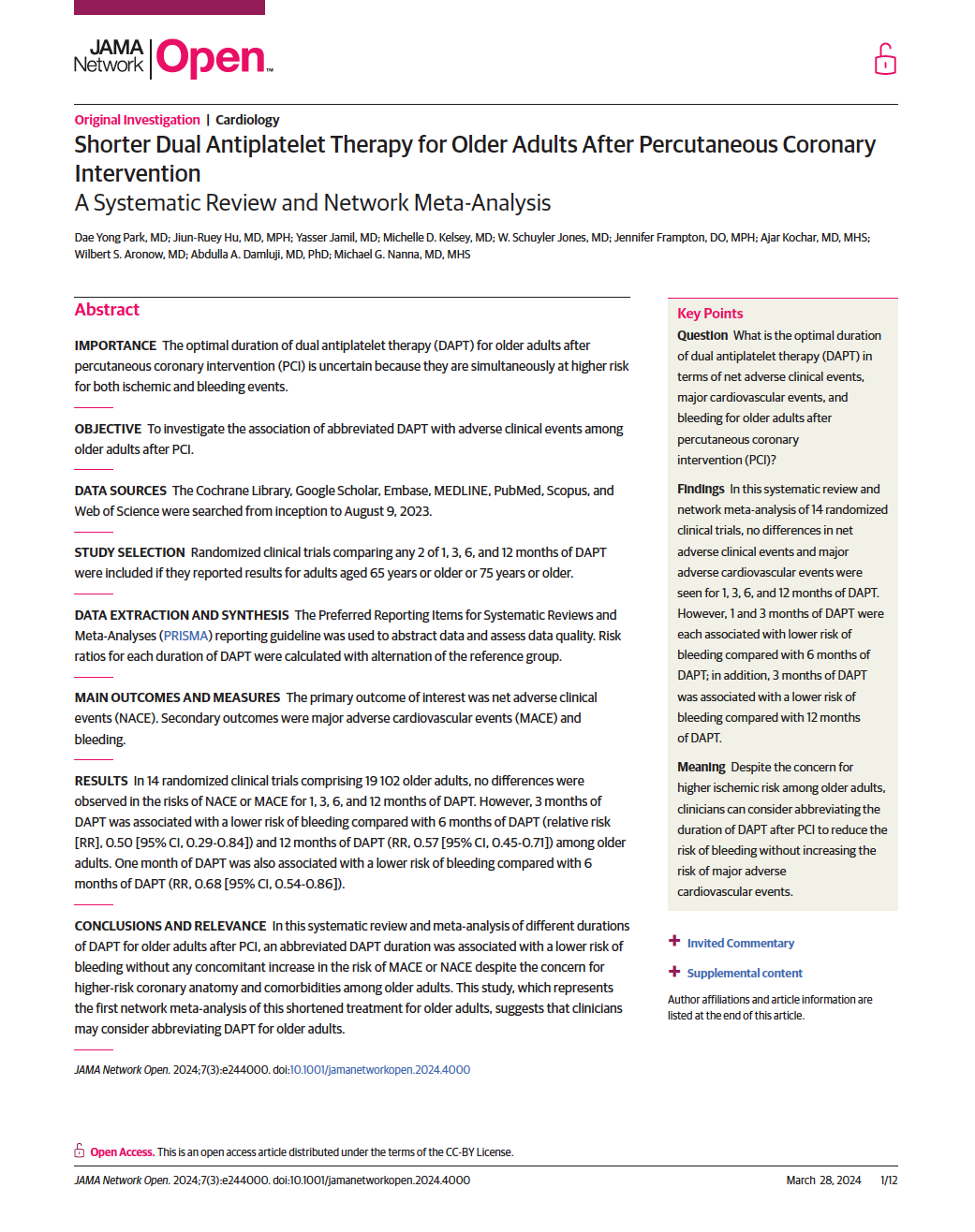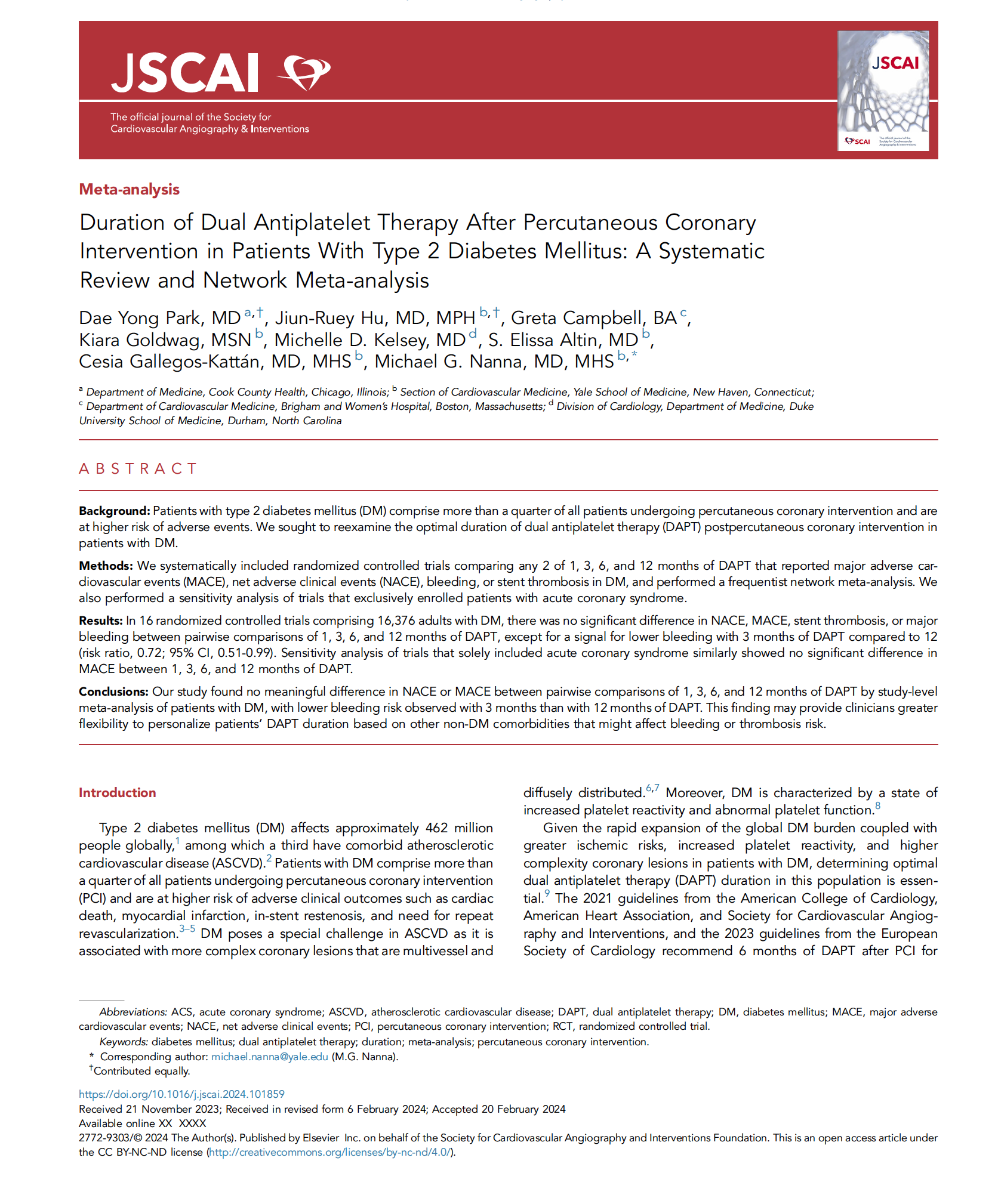📝 Abstract
Objective: Type 2 diabetes mellitus (T2DM) reduces exercise capacity, but the mechanisms are incompletely understood. We probed the impact of ischemic stress on skeletal muscle metabolite signatures and T2DM-related vascular dysfunction.
Methods: we recruited 38 subjects (18 healthy, 20 T2DM), placed an antecubital intravenous catheter, and performed ipsilateral brachial artery reactivity testing. Blood samples for plasma metabolite profiling were obtained at baseline and immediately upon cuff release after 5 min of ischemia. Brachial artery diameter was measured at baseline and 1 min after cuff release.
Results: as expected, flow-mediated vasodilation was attenuated in subjects with T2DM (P<0.01). We confirmed known T2DM-associated baseline differences in plasma metabolites, including homocysteine, dimethylguanidino valeric acid and β-alanine (all P<0.05). Ischemia-induced metabolite changes that differed between groups included 5-hydroxyindoleacetic acid (healthy: −27%; DM +14%), orotic acid (healthy: +5%; DM −7%), trimethylamine-N-oxide (healthy: −51%; DM +0.2%), and glyoxylic acid (healthy: +19%; DM −6%) (all P<0.05). Levels of serine, betaine, β-aminoisobutyric acid and anthranilic acid were associated with vessel diameter at baseline, but only in T2DM (all P<0.05). Metabolite responses to ischemia were significantly associated with vasodilation extent, but primarily observed in T2DM, and included enrichment in phospholipid metabolism (P<0.05).
Conclusions: our study highlights impairments in muscle and vascular signaling at rest and during ischemic stress in T2DM. While metabolites change in both healthy and T2DM subjects in response to ischemia, the relationship between muscle metabolism and vascular function is modified in T2DM, suggesting that dysregulated muscle metabolism in T2DM may have direct effects on vascular function.


